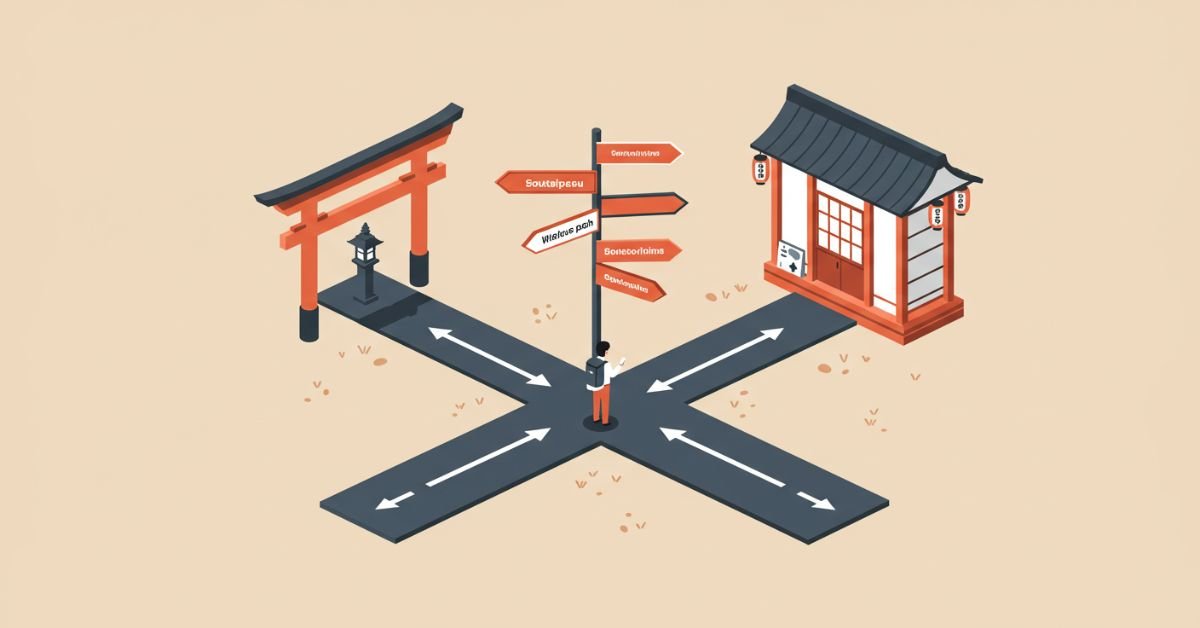At first glance, the word Soutaipasu might seem unfamiliar if you haven’t worked with computers or Japanese terms before. In Japanese, it is written as 相対パス — “soutai” meaning relative and “pasu” coming from the English word path. Together, it simply means relative path.
This small term is widely used in technology, but it carries a concept that is surprisingly easy to understand. In the simplest sense, it’s about finding something based on your current position, rather than always starting from the very beginning.
Contents
- 1 Understanding the Concept
- 2 The Everyday Analogy
- 3 How Soutaipasu Differs from Zettaipasu?
- 4 Why Soutaipasu Matters?
- 5 Soutaipasu in Learning
- 6 Common Mistakes People Make
- 7 Soutaipasu as a Life Lesson
- 8 Everyday Situations Where We Use Soutaipasu Without Realizing
- 9 When to Use Soutaipasu and When Not To
- 10 Conclusion
Understanding the Concept
Think about giving someone directions in your neighborhood. If they are standing next to you, you might say:
“Walk two streets down, then turn right.”
You wouldn’t start from the city’s main gate or the train station; you’d give directions from where they are right now. That’s exactly how a relative path works in technology.
It’s a way of locating a file or place without mentioning the full address from the very start. Rather, you describe the route depending on where you are right now.
The Everyday Analogy
To understand soutaipasu better, let’s compare it to everyday life situations:
- Library Navigation: If you’re already in the library’s fiction section, and someone asks where the mystery books are, you might say, “Just two shelves to the left.” You don’t need to describe the path from outside the building.
- Inside a Mall: If a friend is with you in a clothing store and asks where the fitting rooms are, you simply point them towards the back corner. You don’t tell them to enter the mall, pass by the food court, and then find the store again.
This is the essence of a relative path — instructions that make sense from your current spot.
How Soutaipasu Differs from Zettaipasu?
There’s another Japanese term often used alongside soutaipasu — zettai pasu (絶対パス), which means absolute path.
- Absolute Path: A complete, unchanging address that starts from the very beginning.
- Relative Path: A flexible, location-based address that starts from where you are now.
To put it simply:
- If the full street address of your home is an absolute path,
- Saying “three houses down from the park” is a relative path.
Both are useful. Absolute paths are fixed and exact, while relative paths are flexible and adaptable.
Why Soutaipasu Matters?
At first, soutaipasu might sound like a small technical term, but it makes a big difference in many areas of work. Here’s why it matters:
- Flexibility – You can move things around without breaking connections.
- Portability – You can transfer work from one place to another more easily.
- Simplicity – Shorter, clearer references are easier to follow.
- Teamwork-Friendly – Different people can work on the same project without having to worry about exact locations being the same for everyone.
Soutaipasu in Learning
In Japan, beginners learning computer skills are often taught soutaipasu early on. Teachers use relatable examples instead of technical jargon, like giving directions in a school or finding books in a library.
This practical approach helps students understand that the way to find something depends on where they currently are, and not just on a fixed map.
Common Mistakes People Make
Even though the concept is simple, people sometimes make mistakes when using soutaipasu:
- Forgetting the Starting Point: If you don’t know exactly where you are, your directions won’t work.
- Overcomplicating the Route: Including extra stages can cause confusion.
- Mixing with Absolute Paths: Switching between the two without care can cause errors.
These mistakes happen because people sometimes try to treat a relative path as if it were an absolute one.
Soutaipasu as a Life Lesson
Beyond technology, soutaipasu can also be a metaphor for life. Think about it:
- In life, we often plan our journey as if we have to start from a fixed point, but in reality, we are already somewhere in the middle.
- The best path forward depends on where you stand now, not where someone else started.
In this sense, soutaipasu teaches adaptability. Whether in personal growth, career changes, or learning new skills, understanding your current position before moving ahead makes the journey easier and more effective.
Everyday Situations Where We Use Soutaipasu Without Realizing
You might be surprised to know you already use soutaipasu thinking in daily life:
- Cooking: If you’re halfway through a recipe and someone asks how to continue, you give them the next steps from that point, not from the very start.
- Traveling: When guiding someone from the hotel lobby to their room, you give directions from the lobby, not from the airport.
- Work Tasks: When explaining a process to a colleague, you start from where they currently are in the project.
We naturally think in relative terms when it makes sense, and that’s exactly why soutaipasu feels so natural once you understand it.
When to Use Soutaipasu and When Not To
While soutaipasu is useful, it’s not always the right choice.
Use it when:
- You need flexibility.
- The starting point changes depending on the person or system.
- You want to make instructions simpler.
Avoid it when:
- The starting point never changes.
- You need a fixed, official reference for everyone to use.
Conclusion
Soutaipasu may be a technical term from Japan, but its meaning is easy to grasp and surprisingly universal. Whether you are giving directions in real life or organizing information in a project, the idea of finding a path based on your current location makes sense everywhere.
It’s a reminder that sometimes the smartest way forward isn’t to start from the beginning every time, but to recognize where you are now and move ahead from there.
In technology, it keeps projects simple and flexible. In daily life, it teaches us adaptability. And that’s why soutaipasu is more than just a computer term — it’s a small but powerful way of thinking.



